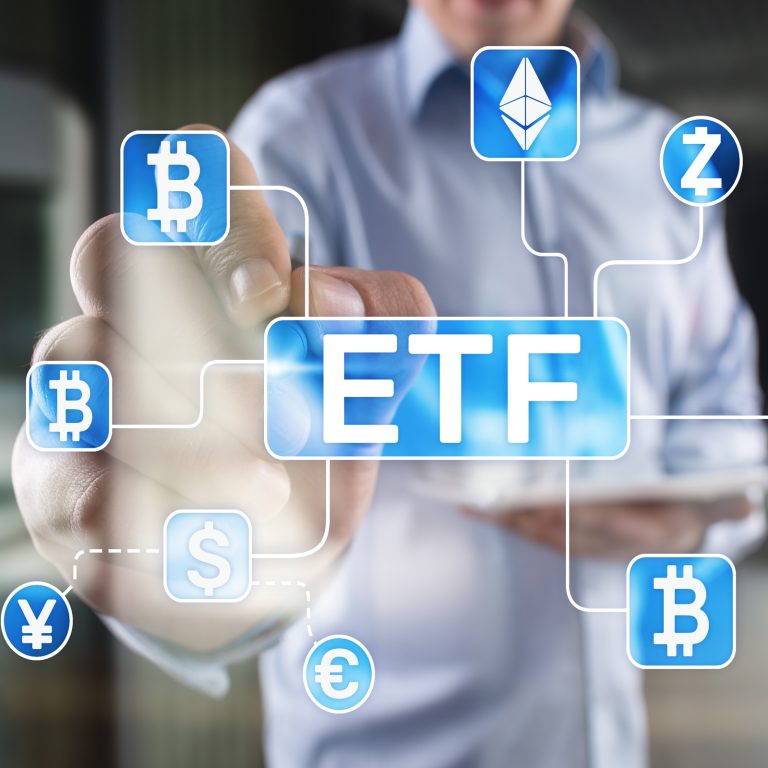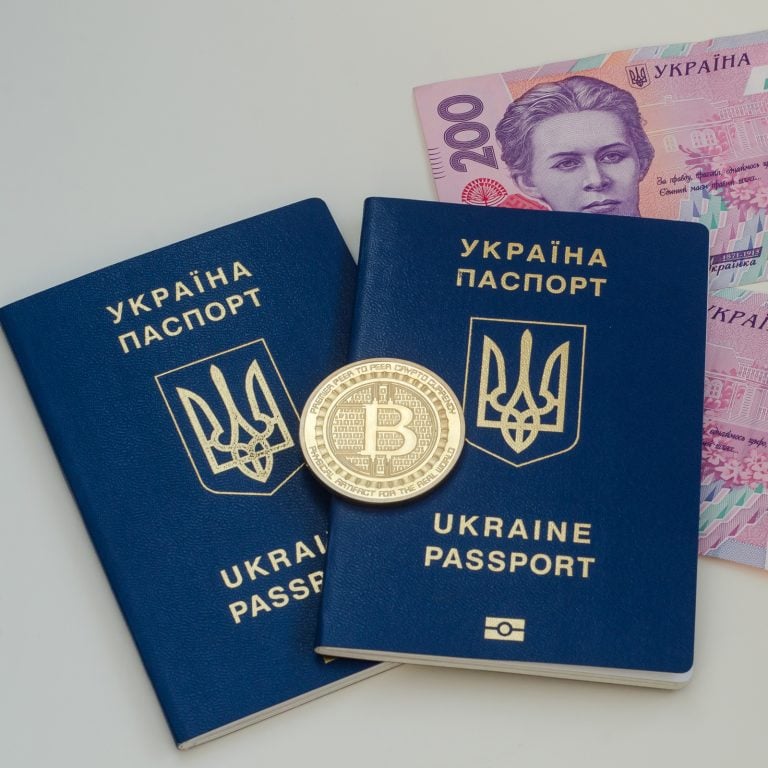2020-3-4 23:33 |
After a prolonged period of rampant instability of crypto markets, it seems like we have slowly sailed into some calmer seas as of late.
Interest in trading and crypto investing has returned and newer platforms like Bybit are hoping to repeat Binance’s immense success from 2017/2018.
While Bitcoin prices (and prices of other crypto assets as well) keep moving up and down with undeterred frequency, there’s no denying that the intensity of said movements is quite lower when compared to $1000+ dollar daily jumps we witnessed in years prior.
Taking that into consideration, it’s no wonder that the interest in trading such an increasingly more predictable asset is becoming more and more popular.
One of the easiest and most often utilized ways of trading cryptocurrency doesn’t even involve actually trading said cryptocurrency! Obviously we’re talking about trading cryptocurrency CFDs – short for contracts/certificates for difference – which are basically derivative products representing an underlying valuable asset such as Bitcoin, Ethereum, etc. CFD trading originally gained popularity among forex, indice and gold/silver/other valuable commodity traders.
The practice has since seamlessly expanded to include crypto commodities as well, mostly because of the fact that more and more people are becoming cryptocurrency holders (and are willing to use said cryptocurrency as backing in their online trading endeavors).
With the rising popularity of crypto CFD trading we’re witnessing an increase of platforms that are giving their customers the ability to engage in said activity. Today we’ll be taking a closer look at one such platform called Bybit; in our Bybit review, we’ll analyze its most notable quirks and features and hopefully help you, a budding crypto trading rookie or an experienced wolf of crypto trading street, decide whether or not you should use said platform to trade.
Important note: you are trading CFDs (just like at any other margin exchange that uses leverages) but deposits and withdrawals are made with actual cryptocurrencies.
Now, let’s start our review of Bybit with some simple facts about its location, company behind it and brief history of this margin trading bitcoin exchange.
Visit Bybit NowFeatureMaker fee -0.025%Taker fee 0.075%DepositCrypto onlyWithdrawal feefreeLeverage100x on BTC; 50x on other coinsSupported coinsBTC, ETH, XRP, EOSProsUp to 100x leverageReduced risk of price manipulation and liquidationsNo KYC required ConsUS citizens not allowedlimited number of coinsWhat is Bybit and where is it located?Bybit is a somewhat late addition to the ever-growing suite of exchanges looking to provide cryptocurrency derivative trading services.
The platform came to be sometime in 2018 with its original headquarters being established in Singapore. Since then they’ve expanded their operations to additional offices in Hong Kong and Taiwan in an effort to support their growing user base of 100,000+ traders hailing from places such as North America, Europe, Russia, Japan, South Korea and Southeast Asia.
To reflect this multi-national pool of users, the exchange’s interface is currently accessible in English, Chinese, Traditional Chinese, Korean, and Japanese.
Who is behind the platform?The team behind Bybit claims to be made out of professionals from the Forex industry and investment banking (with some of the platform founders/technicians coming from industry giants such as Morgan Stanley, Tencent, Ping’an Bank and Nuoya Fortune), as well as early blockchain adopters.
Bybit is led by the CEO Ben Zhou; him and his team are very proud of their platform’s trade-matching engine abilities, claiming that the exchange is able to facilitate up to 100,000 transactions per second (with each trade being executed within 10 microseconds).
Alongside that, they like to point out that the people behind Bybit are quite technologically savvy. They choose a so-called “grey release” model of releasing patches and software updates which enables them to upgrade their technology on the go and avoid potential server downtime (something that industry standouts like BitMEX have been notorious for).
Additionally, they implement a Hierarchical Deterministic Cold Wallet System to store all assets they hold which ensures additional safety of your cryptocurrency tokens.
What can you trade on Bybit?This Singaporean trading hotshot specializes in already mentioned contracts for difference, also referred to as a type of futures contract caller perpetual contracts or perpetual swaps.
Perpetual swaps are a unique form of futures contract called an “inverse futures contract.” Similarly to regular futures, cash-settlement of the asset can be accomplished without physical delivery. However with inverse futures for Bitcoin, settlement of a BTC/USD futures contract happens in BTC, the base currency, instead of being settled in USD.
The popularity of trading these exploded during recent years through exchanges like BitMEX, Deribit, OKEx, and other providers of cryptocurrency derivatives.
They provide some very obvious advantages to any potential trader, including the ability to trade cryptocurrency against fiat pairs without exposing yourself to fiat and the ability to hedge your positions in USD by opening short positions. Additionally, these contracts are perpetual, meaning that they’ll never expire thanks to a negative funding system which charges a funding rate at three pre-determined times every day.
Supported cryptocurrencies and offered leverages on BybitBybit currently offers perpetual contracts for 4 cryptocurrency assets: Bitcoin, Ethereum, Ripple, and EOS. The platform has plans to expand to tokens like LTC, TRX and others in the future but nothing concrete has been set in motion on that topic.
Interested traders can create an account on the platform, deposit tradable assets onto their account’s corresponding wallet and start trading against the almighty USD at any time.
This exchange has one feature that’s very useful for those who are looking for a higher risk-higher reward trading experience. Of course, we’re talking about leverage/margin trading.
The amount of leverage on offer will depend on the derivative contract you plan to trade. BTCUSD packs the best punch, offering leverages of up to 100X; the remaining three assets offer leverages of up to 50X.
These leverages are quite high and can be very dangerous when placed in the hands of someone who doesn’t know how to margin trade. Therefore you should carefully research and learn about margin trading before slapping that sweet 100X BTCUSD trade onto Bybit’s order books.
Experienced traders will find it pleasing that the exchange offers the ability to both short and long the available assets. Additionally they will enjoy seeing the built-in stop-loss feature which is always a welcoming risk-managing solution (one that’s surprisingly not present on some bigger and older market competitors).
How to create an account on Bybit?Account creation can be done either via a unique e-mail address or via your mobile phone number. Depending on the method of registration selected you will either be e-mailed or texted a verification code for your account.
Once you enter your verification code the account will become “real” and able to start depositing funds/trading them. Let’s review how to deposit and withdraw funds from Bybit.
Deposits and WithdrawalsDeposits are done in one of the supported cryptocurrencies you can trade on the platform. Anyone who creates an account on the exchange can deposit funds and start trading on it, without the need to perform KYC certification process present on most other industry leaders.
Whether you decide to deposit BTC, ETH, XRP or EOS, Bybit won’t charge you any depositing fees (leaving the blockchain mining fee as the only expense related to the transaction). As for withdrawals, Bybit has set minimal withdrawal limits for each asset present on the platform. The limits are as follows:
Bitcoin: 0.0005BTCEthereum: 0.01ETHEOS: 0.1EOSRipple: 0.25XRPBybit will process withdrawal 3 times a day at 0800,1600,2400 (UTC). Both deposits and withdrawals are handled by navigating to the “My Assets” section of your account.
Bybit testnetAlternatively, those traders who don’t feel like putting their real money on the line can use Bybit’s testnet to engage in some risk-free demo trading. Obtaining BTC testnet coins can be a tricky ordeal though as it requires navigating to Bitcoin faucets which provide free cryptocurrency for various testnets.
Bybit gets significant points when it comes to its user interface, especially when compared to some of its main competitors like BitMEX.
The look and feel of the whole thing is very Binance-like, with Bybit’s designers opting to use Changpeng Zhao exchange’s well-known black/orange color scheme as the basis for their project. The interface is easy to navigate and is highly customizable, allowing the user to re-arrange the placement of his graphs/tools/trading panel/order books/contract details/past trades in a manner that suits his preferences the best.
That is always a great thing to see as it helps the trader customize his trading experience and stay on top of everything he needs to know about the market and his positions.
Bybit feesBybit utilizes a market maker/taker pricing model which means that the fees you pay when trading will depend on whether or not you provide the exchange with liquidity. If you are actually providing liquidity to Bybit you’re going to be treated as a market maker.
Market makers don’t pay any trading fees but will instead earn a rebate for their liquidity. At 0.025%, this is paid on each and every trade that the trader provides liquidity for. Meanwhile, regular traders are treated as market takers and Bybit will charge them 0.075% per trade.
In addition to this, ByBit also charges a position funding fee, which is exchanged between the long positions and the short positions on the platform.
ContractsLeverageMaker RebateTaker FeesFunding RateInterval for Funding RateNext FundingBTCUSD100X-0.0250%0.0750%0.0100%every 8 hours2020-03-04 01:00:00ETHUSD50X-0.0250%0.0750%0.0100%every 8 hours2020-03-04 01:00:00EOSUSD50X-0.0250%0.0750%0.0100%every 8 hours2020-03-04 01:00:00XRPUSD50X-0.0250%0.0750%0.0100%every 8 hours2020-03-04 01:00:00Bybit customer supportSupporting this sizeable user base can be a complicated affair. Bybit decided to tackle this problem by paying a 24-7 available support team which can be reached through the platform’s built-in chat functionality.
They also provide a support e-mail address at [email protected] as another avenue of voicing your needs directly to a support person. The exchange has profiles on multiple social networks including Twitter, Reddit, YouTube, Facebook, Instagram, which are also operated by Bybit employees and can be used as an avenue of reaching out for help.
Finally, Bybit recently introduced probably the most direct way of supporting their customers by launching 12 Telegram groups oriented to various local communities that use the exchange the most.
By following this link you’ll find access to Bybit’s Japanese, Korean, Spanish, Arabian, Israeli, Argentinian, Indian, Russian, French, Italian, German, and Turkish Telegram communities, with the exchange actively working on introducing additional groups for other active local communities.
Is Bybit safe to use?The platform utilizes some quality security measures to ensure the safety of funds their users deposit. Most notably, Bybit takes advantage of the hot-cold wallet combo (implemented by most other major exchanges).
This system sees the exchange hold only a fraction of user crypto on a hot wallet (mostly to honor withdrawal requests quickly), with the remaining major percentage of crypto being stored in multisig cold wallets. The security team at Bybit performs fund withdrawals from these cold wallets in three withdrawal cycles per day. Before a withdrawal request is processed, the team will perform a number of internal security checks (details of which weren’t fully disclosed for the general public).
2FA is another safety feature that has become a mainstay in crypto trading, allowing traders to add a second layer of protection to their online exchange dealings. Your fund security should be boosted by risk-mitigating features such as stop-losses, ensuring that you never find yourself in a situation where your whole stack of cryptocurrency is liquidated due to sudden, intense market moves. All that being said, some individuals might be put off by the exchange’s relative newcomer status, as well as the fact that Bybit doesn’t require any KYC verifications from its traders.
Reduced risk of market manipulation thanks to the Mark PriceDual price mechanism: Unlikely to be manipulated
Market manipulation is the act of intentionally inflating or deflating the price on an exchange for personal gain. Such abnormal price fluctuations may cause malicious liquidations on traders’ positions and result in a very unfair trading environment.
Bybit uses the Dual-price mechanism to protect its traders from market manipulations and ensure a fair trading environment. At present, most exchanges use Last Traded Price as the trigger for liquidation. Bybit employs Mark Price as the trigger for liquidation instead of the last traded price. Traders can regard Mark Price as a reference to real-time spot price transactions from major spot exchanges. As such, Bybit does not have the power to influence Mark Price.
ByBit Insurance FundThe ByBit insurance fund is a protection mechanism used to thwart the risk of auto-deleveraging, which happens when there is insufficient liquidity in the market, and liquidated positions are closed at a price lower than the bankruptcy price.
For such cases, ByBit will use the balance of the insurance fund to cover the difference between the final liquidation price and the bankruptcy price.
The platform is transparent about the size of its insurance fund, with daily updates on its balance that can be seen on Historical Data page.
Comparing ByBit vs BitMEX in this regard it becomes apparent that ByBit’s current 200 BTC insurance fund is a drop in the bucket in comparison with BitMEX’s almost 30,000 BTC fund.
However, it is proportional to the trading volume of Bybit, which is also couple of orders of magnitudes lower than BitMex’s.
ByBit Customer SuppoReferral and affiliate programsBybit offers its customers the ability to earn money by referring new people to the exchange. This program has two levels it operates on.
The first level is oriented towards “regular people”, aka non-institutional clients who want to refer their friends and acquaintances to the service. Using their referral links, traders can receive a trading bonus of up to $10 once the person that was referred to Bybit creates a new account on the platform and deposits at least 0.2 BTC to their on-platform wallet.
It’s important to note that the bonus acquired by getting new people to sign up cannot be withdrawn from the platform’s wallet and can only be used as margin or to pay trading/funding fees and cover losses.
The program has a second level oriented towards institutions/influencers/introducing brokers who have sizable user bases and social media followings. This program has all the markings of a typical affiliate arrangement, offering the affiliate a $60 welcome bonus, a chance to earn up to 30% of his/hers sub-affiliates trading commissions, 1-on-1 assistance from Bybit’s professional account managers, customized marketing materials, real time settlement of commissions and full data transparency regarding transactions and paid commissions.
Finally, Bybit recently took a more active approach to expanding their social media influence by introducing a so-called “Social Media Bonus” program. Anyone with a Twitter account can become a part of this program and earn a $5 welcome bonus by following Bybit’s official Twitter page and retweeting said page’s pinned message.
New companies often times struggle to establish their presence and take a piece of their desired market pie. Such is the case on the market of online crypto trading exchanges, where Bybit is definitely up against several longstanding industry giants.
Still, Bybit does have a couple of aces up its sleeve which set it apart from the competition (and have earned it a sizeable user base already). If they keep playing their cards right (and if the competition keeps making questionable-to-downright-bad moves), Bybit could become the next best thing in the future of crypto derivatives trading.
You might also want to take a look at our comparison of Bybit vs other exchanges:
Bybit vs BitMexIn case you are not swayed into registering on Bybit, you might be interesting in learning more about its direct competitors like Binance, Cex.io, PrimeXBT, PrimeBit, Bitfinex, Kraken. You can trade crypto CFDs with a leverage on forex and other derivatives platforms like eToro, Plus500, IQ Options, City Index, AvaTrade.
The post Bybit review 2020 – Pros & Cons, Fees, Security appeared first on CaptainAltcoin.
origin »Emerald Crypto (EMD) íà Currencies.ru
|
|



























